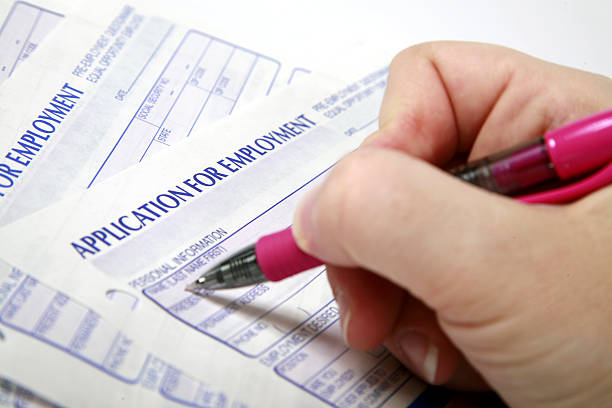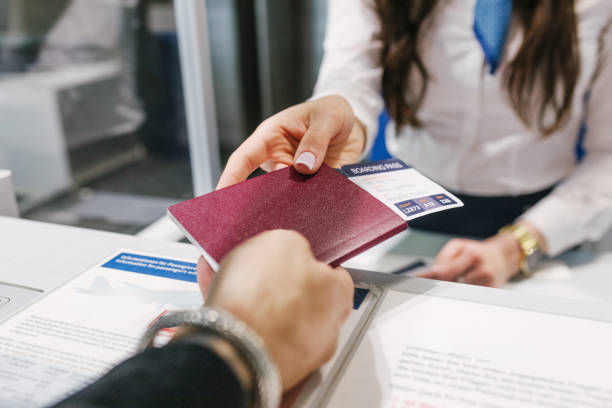Immigration
Application of India Visa: Step by Step Guide
Are you planning an exciting journey to the vibrant land of India? To embark on this remarkable adventure, the first step is securing your India visa. Application of India Visa is a crucial process that grants you the permission to explore the country’s rich cultural heritage, breathtaking landscapes, and diverse traditions. In this guide, we will take you through the intricacies of the visa application process, ensuring a smooth and successful journey to the enchanting realm of India.
Overview

An India visa is an official document issued by the Indian government that grants permission to foreign nationals to enter and stay in India for a specified period. It serves as an endorsement on the passport or travel document, indicating that the holder has met the necessary requirements for entry into India.
India offers various types of visas to cater to different purposes of travel, such as tourism, business, education, employment, medical treatment, and more. Each visa category has specific eligibility criteria and requirements that applicants must fulfill.
The India visa application process typically involves submitting an online application form, providing supporting documents, paying the required fees, and attending an appointment at an Indian embassy, consulate, or visa application center. The process may vary depending on the type of visa and the applicant’s nationality.
India’s visa policies and regulations are governed by the Bureau of Immigration under the Ministry of Home Affairs. The visa duration can range from a few days to several years, depending on the purpose of travel and the visa category granted.
It’s important for travelers to understand that possessing an India visa does not guarantee entry into the country. Immigration officers at the port of entry have the authority to grant or deny entry based on their assessment of the traveler’s documentation and compliance with immigration regulations.
Requirements for an India Visa Application
When applying for an India visa, applicants are typically required to provide certain documents and fulfill specific criteria. The exact requirements may vary depending on the type of visa being sought and the applicant’s nationality. Here are some common requirements for an India visa application:
- Valid Passport: Applicants must possess a valid passport with a minimum validity of six months beyond the intended period of stay in India. The passport should have at least two blank pages for visa endorsement.
- Completed Application Form: Applicants need to fill out the designated visa application form accurately and completely. The form is usually available online on the official website of the Indian embassy or consulate.
- Photographs: Recent passport-sized photographs meeting the specifications set by the Indian authorities are required. Generally, two colored photographs are needed, although the exact specifications may vary.
- Proof of Travel Itinerary: Applicants may be asked to provide a copy of their travel itinerary, such as flight reservations or travel tickets, indicating the intended entry and exit dates from India.
- Proof of Accommodation: Applicants may need to provide evidence of their accommodation arrangements in India. This can be in the form of hotel bookings, a letter of invitation from a host, or any other relevant document.
- Financial Documents: Applicants may be required to submit proof of sufficient financial means to support their stay in India, such as bank statements for the past six months, traveler’s cheques, or sponsorship letters, depending on the visa category.
- Visa Fee: Applicants must pay the applicable visa fee, which varies depending on the type and duration of the visa. The fee is typically non-refundable, regardless of the outcome of the visa application.
- Supporting Documents: Depending on the visa category, additional supporting documents may be required. For example, for a tourist visa, applicants may need to provide a detailed travel itinerary, proof of travel insurance, or a letter of sponsorship, if applicable.
- Other Documents: Applicants may need to submit additional documents as per the specific requirements of their nationality or the purpose of travel. This could include employment letters, educational certificates, marriage certificates, or medical documents, among others.
Eligibility for an India Visa:
The eligibility criteria for an India visa can vary depending on the type of visa being applied for and the applicant’s nationality. However, there are some general guidelines that determine who is eligible to apply for an India visa. Here are the key factors that determine eligibility:
- Nationality: The eligibility for an India visa is primarily based on the applicant’s nationality. Different visa categories have specific eligibility criteria for each nationality. It is important to check the specific requirements for your nationality before applying.
- Purpose of Travel: Each visa category is designed to accommodate specific purposes of travel, such as tourism, business, education, employment, medical treatment, or visiting family or friends. To be eligible for an India visa, applicants must demonstrate that their purpose of travel aligns with the chosen visa category.
- Valid Travel Documents: Applicants must possess a valid passport with a minimum validity of six months beyond the intended period of stay in India. The passport should have at least two blank pages for visa endorsement.
- Meeting Requirements: Applicants must fulfill the requirements outlined by the Indian authorities for the specific visa category being applied for. This includes submitting the required documents, paying the visa fee, and meeting any additional criteria specified for that category.
- Compliance with Immigration Laws: Applicants must comply with the immigration laws and regulations of India. This includes having a genuine purpose of travel, not overstaying previous visas, and not being involved in any activities that could be deemed illegal or against immigration policies.
Types of India Visa
There are various types of India visas available to cater to different purposes of travel. The specific visa category you need to apply for will depend on the purpose of your visit to India. Here are some of the common types of India visas:
- Tourist Visa: This visa is for individuals who plan to visit India for tourism, sightseeing, or to meet family or friends. It is usually granted for a specific duration, allowing for leisure activities within the country.
- Business Visa: Business visas are intended for individuals who are traveling to India for business purposes, such as attending meetings, conferences, or exploring business opportunities. This visa is suitable for business professionals, entrepreneurs, and company representatives.
- Employment Visa: An employment visa is required for individuals who have secured employment with an Indian company or organization. It is granted to skilled professionals, workers, teachers, researchers, and those engaged in specific employment activities in India.
- Student Visa: Students who have been accepted into recognized educational institutions in India can apply for a student visa. This visa allows them to pursue their chosen course of study in India.
- Medical Visa: Individuals seeking medical treatment in India can apply for a medical visa. This visa is granted to those traveling for medical purposes, including undergoing medical procedures, consultations, or specialized treatments in Indian hospitals or medical facilities.
- Conference Visa: Conference visas are issued to individuals attending conferences, seminars, or workshops held in India. This visa allows participation in specific events organized by Indian organizations.
- Research Visa: Researchers, scholars, and professors undertaking research work or teaching assignments at recognized institutions in India can apply for a research visa. This visa allows them to stay in India for an extended period to conduct research or teach.
- Transit Visa: If you have a layover in India and need to pass through an Indian airport to reach your final destination, you may require a transit visa. This visa allows you to stay in India for a limited duration while in transit.
Processes for Application of India Visa

The application process for an India visa typically involves the following steps:
- Determine the Visa Type: Identify the appropriate visa category based on the purpose of your visit to India, such as tourist visa, business visa, employment visa, etc. Each category has specific requirements and documentation.
- Gather Required Documents: Collect all the necessary documents for your visa application, which may include a valid passport, completed application form, photographs, proof of travel itinerary, accommodation details, financial documents, and any additional documents specific to the chosen visa category.
- Fill out the Application Form: Complete the visa application form accurately and thoroughly. The application form can usually be obtained from the official website of the Indian embassy or consulate in your country. Ensure that you provide correct and up-to-date information.
- Make an Appointment: Some Indian missions require applicants to schedule an appointment before submitting their visa application. Check the website or contact the embassy/consulate to determine if an appointment is necessary and how to schedule it.
- Submit the Application: Submit your visa application along with the required documents to the designated Indian embassy, consulate, or visa application center in your country. Some countries also offer the option of applying online through the e-visa portal.
- Pay the Visa Fee: Pay the applicable visa fee as specified by the Indian authorities. The fee can vary depending on the visa category, nationality, and duration of stay. Fees are typically non-refundable, regardless of the outcome of the visa application.
- Attend Biometrics and Interview (if required): In certain cases, applicants may be required to provide biometric data (such as fingerprints) and attend an interview as part of the visa application process. Follow the instructions provided by the Indian embassy or consulate regarding these additional requirements.
- Track the Application: After submitting your application, you can track its progress through the online tracking system provided by the Indian embassy or consulate. This will help you stay updated on the status of your visa application.
- Collect the Visa: Once your visa application is approved, you can collect your visa from the embassy, consulate, or visa application center where you submitted your application. Some countries also offer the option of receiving the visa by mail.
It is important to note that the visa application process and requirements can vary based on your nationality and the specific Indian mission you are applying through. It is advisable to consult the official website of the Indian embassy or consulate in your country for the most accurate and up-to-date information regarding the visa application process.
Conclusion
As you reach the end of this guide, you are now equipped with the knowledge and understanding of the Application of India Visa. By navigating through the requirements, gathering the necessary documents, and submitting a well-prepared application, you open the door to unforgettable experiences in this captivating nation. From the bustling streets of Delhi to the serene backwaters of Kerala, India beckons with its beauty, warmth, and endless discoveries.
So, begin your application process with confidence, knowing that you are embarking on a transformative adventure that will immerse you in India’s rich tapestry of history, spirituality, and vibrant cultures. Let your journey to India unfold, and may the memories you create be cherished for a lifetime. Bon voyage as you embark on your remarkable expedition with your India visa in hand.






